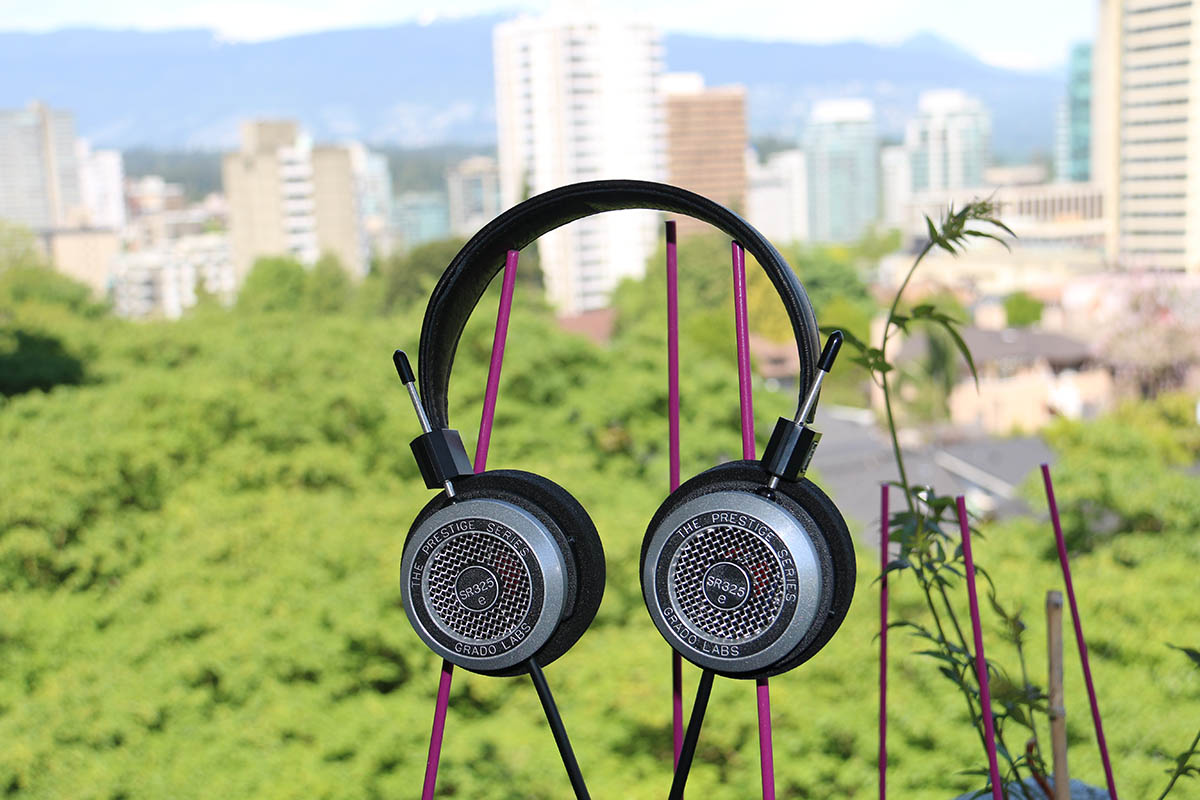
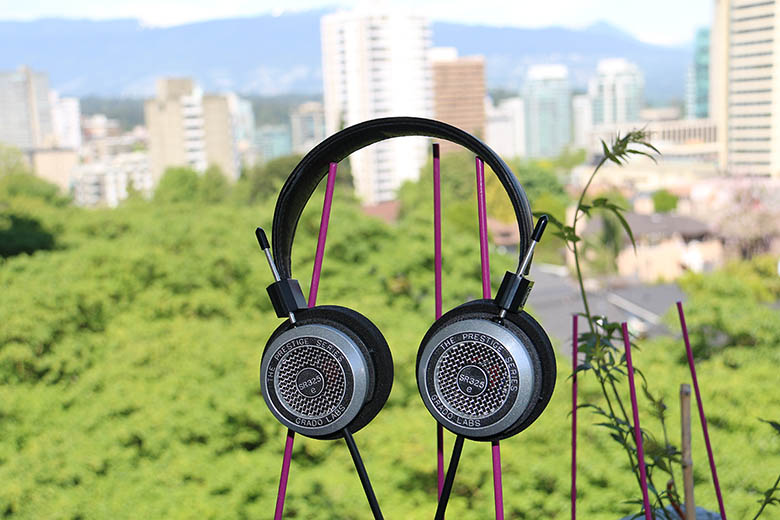
The Master Switch


The Master Switch
There’s probably no need to introduce Grado. But on the off chance that you’ve never encountered them before, here’s a very short introduction: Brooklyn-based, family company, three generations, make headphones that look like 1960s radio operator cans. Subject of multiple adoring profiles in publications like the New York Times, and holders of the kind of hipster cachet that bigger manufacturers like Sennheiser and Beyerdynamic can only dream of. Their SR325e headphones might not be the newest model – that would be the extraordinarily expensive PS2000e flagship – but they are still excellent. In this review, we break down the sound, design, comfort and fit, packaging and accessories, specs and more of the SR325e headphones. To see alternatives, read our list of the best high-end headphones.
It would be wrong to say that once you heard one pair of Grados, you’ve heard them all – their headphones are far too good and far too well-engineered for that – but there’s no denying that they have a very distinctive house sound. It’s good, occasionally great, but it may not appeal to everyone, and it’s worth knowing about it before you commit to something like the Grado SR325e.
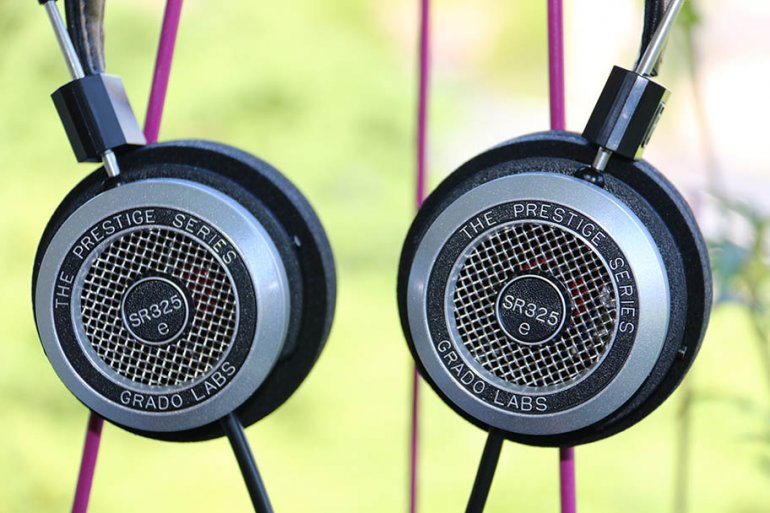
The SR325e – and just about every other headphone from the company – revels in detail. They might not deliver ear-shattering bass, or the kind of warm, glowing mids associated with something like the Sennheiser HD650s, but this is deliberate. The company’s sound engineers have spent a long time perfecting their approach to sound, and in preserving as much detail and dynamics as possible.
Put simply, with these headphones, you’re able to hear absolutely staggering amount of detail. The picture they present of the music is crystal-clear, amazingly precise, managing to preserve the dynamics and depth of the material without compromising on the musicality. Vocals are just stunning, and more nuanced instruments like violins took our breath away. When it comes to presenting a clear picture, these are pretty much unbeatable. At 32 ohms, their impedance is low enough to run off a smartphone, although they definitely benefit from a good amp.
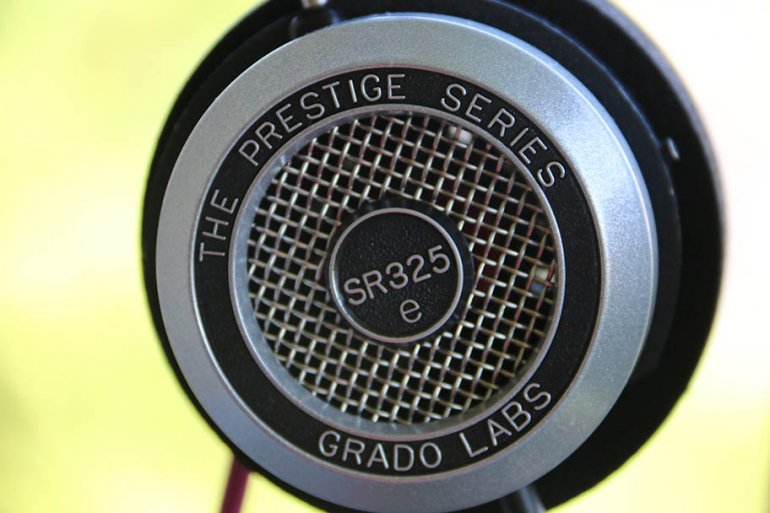
Grado don’t make a song and dance about their driver technology – we like to imagine it as being a secret family recipe, locked away in a vault like the formula for Coca Cola – but there’s no question that they’ve pretty much perfected it. When you’ve got three generations of the same family working on the same thing pretty much 24/7, it’s hardly surprising that they get really good at it. The Grado house sound - pinpoint precise highs, sparkling detail, glorious depth and realism – is fully present here. It’s absolutely the best thing about these headphones, and if you haven’t experienced it, you owe it to yourself to try.
However, just because something is good doesn’t mean that it’s suitable in all scenarios. A couple of bottles of beer wouldn’t feel right at a sixteen-course tasting menu, and a glass of Châteauneuf-du-Pape at a tailgate party just doesn’t work (although if you’ve done this, please send us photos, because that’s pretty awesome). In the same vein, the Grado House Sound just isn’t suited to certain genres. If you’re a fan of hip-hop, dubstep or any genre with lots of low end, these are going to leave you very unsatisfied. It’s not that the bass is bad; it just lacks emphasis, with far more expression higher up in the frequency range. Play some folk music, or classical, or ambient tunes through these, and you’ll get some of the best sound currently available. But if you’ve got a friend who enjoys absolutely enormous subwoofers, and who has a car that bounces off the street when he turns up the volume, you may not want to give him these to try.
Again, we need to emphasise that this isn’t necessarily a negative aspect. These don’t pretend to be anything else – they don’t claim to be a jack of all trades, able to handle anything you throw at them. They simply do exactly what they set out to do, and pull it off like just about no other headphones can. In a way, perhaps, that’s the one negative thing we could say about them: they didn’t really surprise us. We knew exactly what we were going to get, and we got it.
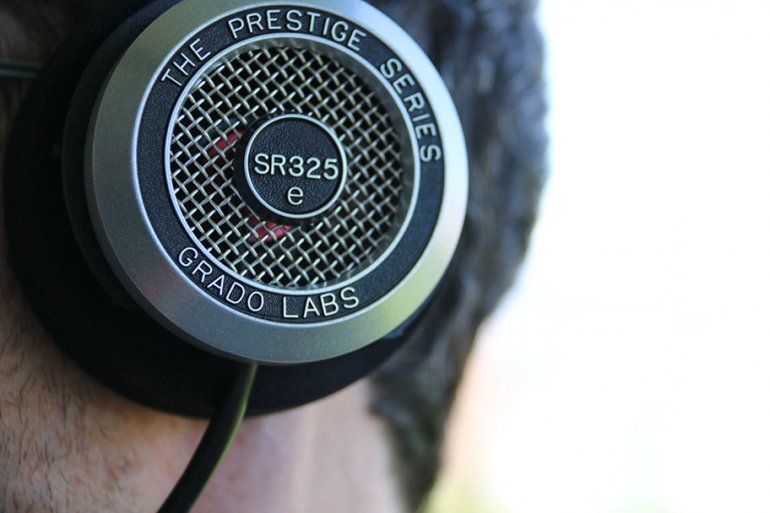
The sound is helped along by the open-back design, which – as would be expected – really enhances the air and openness of the audio quality. But just as the sound signature is typical Grado, so is the bleed. Virtually every pair of headphones from the company leaks sound like you wouldn’t believe, meaning that anybody in your immediate radius is going to know exactly what you’re listening to, and probably won’t appreciate it nearly as much as you will. It’s a little hard for us to consider this a negative. Mostly because, again, it’s something of a standard feature with the company, and not necessarily something that can be easily fixed without messing with the gorgeous sound. Everything from these to their flagship models to their entry-level $99 SR80e headphones has it. All the same, it’s still a problem, and it’s worth being aware of. Our take? It’s worth it for the glorious audio quality.
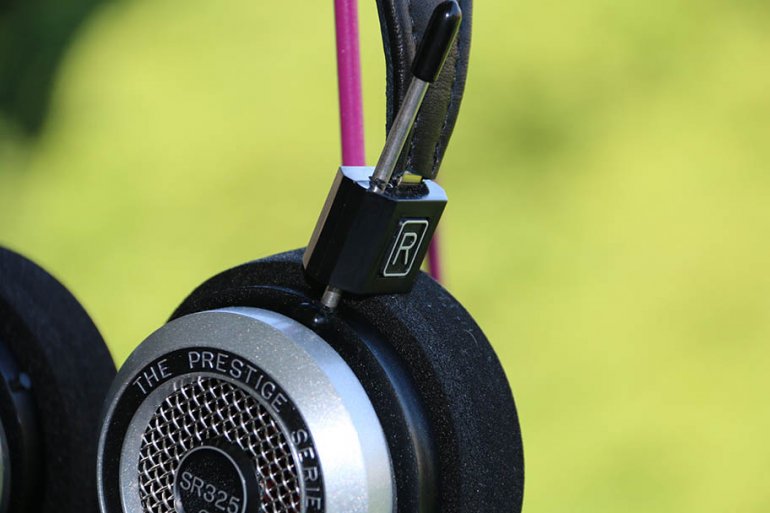
One of the reasons why Grado are so widely recognised is because it’s easy to recognise their headphones. Although their models are all subtly different, in construction and materials, they all share the same basic DNA, and the same basic shape. And provided you’re okay with the slightly retro look (which we are) you’ll find plenty to love here. The Grado SR325e is an open-back headphone – and when we say open-back, we mean it in every sense of the term. You could, if you were so inclined and a touch sadistic, unfold a paperclip and poke it through the wire mesh grille that adorns the back of the housing, right into the guts of the headphones. (Please do not do this. Or if you do, don’t blame us when your headphones stop working).
It’s a fun and unique aesthetic, and the homebrew vibe is further enhanced by the raised metal lettering around the outside, proudly announcing that the SR325e is part of The Prestige Series. Well, OK then. The housings themselves are made of powder-coated aluminum, which is weighty and satisfying. Grado say that they selected this material to help smooth the transition between high and low frequencies. It looks good, but we were less enamored of the plastic ring behind each housing, which looks and feels a little cheap. This is especially true when you put these up against something like the MEZE Audio 99 Classics (full review here). Those are only $14 more expensive than the Grados, at $399, but the design is just on another level. All wood, baby. All wood.
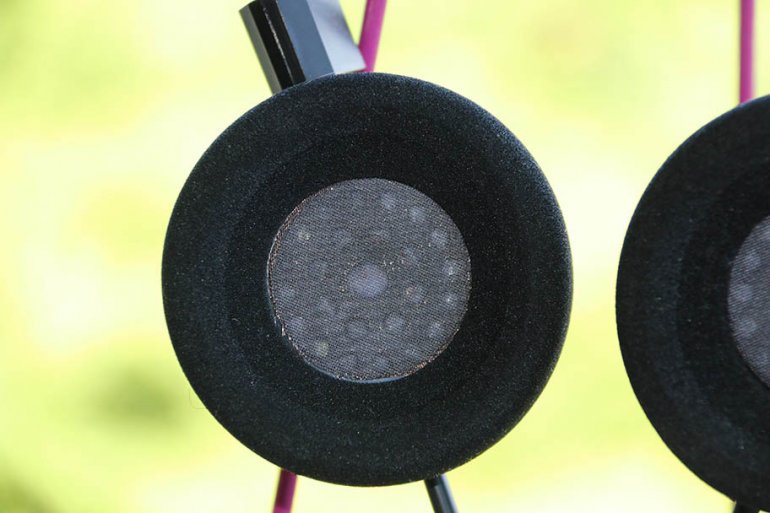
We’ll talk about the cups and their comfort level in the next section. They are connected to the band via two steel rods, both of which move up and down easily without too much hassle, and stay where you put them. The headband itself is stiff and inflexible, wrapped in leather, and looks and feels good. It is worth noting that the cups actually rotate a full 360°, which is a surprisingly useful feature – especially when you want to hang the headphones around your neck. You can’t actually remove the cable from the cups, which we found slightly annoying, but in general, it was a minor problem. For the most part, the design of the SR325e headphones was solid. We’ve always been fans of the Grado aesthetic, and this does a good job of marrying it with rugged design and relatively premium materials (plastic rings notwithstanding). It’s hardly a unique design – you can see it in just about any other Grado headphones of the same series, bar the downright strange eGrado – but there’s no denying that it works

It’s not just indie cachet and 1960s looks that Grado are known for. Their cans – how shall we put this? – can be uncomfortable as hell. Whenever we’ve used a pair, we’ve always found them to be so. Where other manufacturers might include a carefully-shaped set of pads, Grado have always been content to rely on a couple of bog-standard foam rings. Even expensive models like the PS1000e have used the same design, which might help keep costs down, but which is murder to the side of the head. We knew what kind of pads the SR325e had before we got them, but even so, our heart sank a little when we pulled these out the box and saw the familiar foam rings. Would it kill the company to change the shape?
(Update: Grado's John Chen has pointed out that the round shape helps with the sound signature, and that the stainless steel headband can be "re-torsioned" to get a finer fit.)
As it turns out, we may have been overthinking this. While there’s no denying that the SR325e was a slightly less comfortable pair of headphones than others we’ve reviewed, it didn’t give us any major problems. Even after a few hours of listening, we were only feeling a slight amount of discomfort. Part of this, we think, was down to the clamping pressure, which felt precise and even across the skull. Again, this is something we were worried about, and something we had an issue with before. So, it was a good sign to see that, if the company wasn’t going to change how it did things, at least it seemed to have paid attention to the comfort issues. More of this, please.
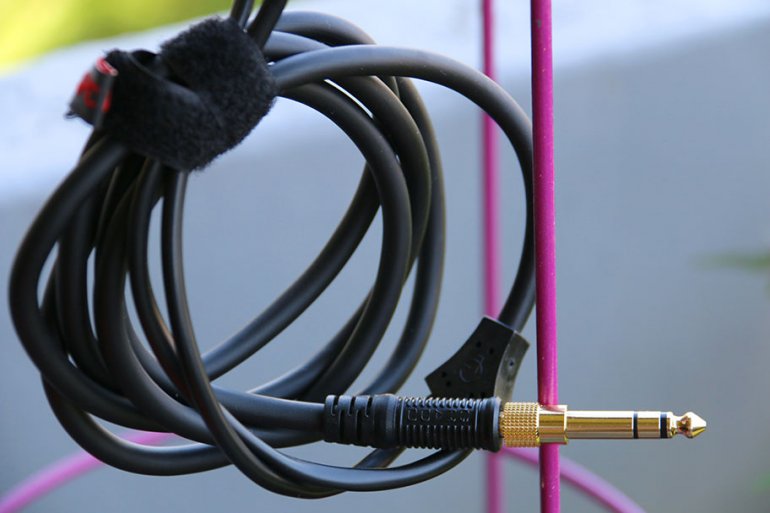
Here’s another aspect of Grado that has become legend: their plain packaging. No matter how expensive the headphones, they all come in the same kind of simple cardboard box. Normally, we like a little bit of flash with our packaging - as anybody who has read our review of the AudioQuest NightHawk Carbons will attest to. We believe the headphone experience should start from the moment you pick up the box. But, just this once, we’ll give these cans a pass. It’s definitely part of the aesthetic - so we’re down with it. And besides, we’re almost certain that it helps the company cut costs, which is something we like to see in a headphone market that is getting further out of control every day.
The cans themselves are held in a simple foam insert, with the cable coiled up beneath them. Although you can’t attach the cable from the headphones, it’s worth talking about a little. It feels thick and substantial, with a decent amount of weight and heft. For the entirety of the time we had the SR325e’s, they never tangled on us, which is something we really appreciated. Apparently, the cable helps the sound as well, as it’s designed to have eight conductors. Beyond that, the only other accessory is a simple, gold 6.3mm headphone adapter. Nothing too special, but it all gets the job done. While we do wish there was a carry case, it’s not a deal breaker for us.
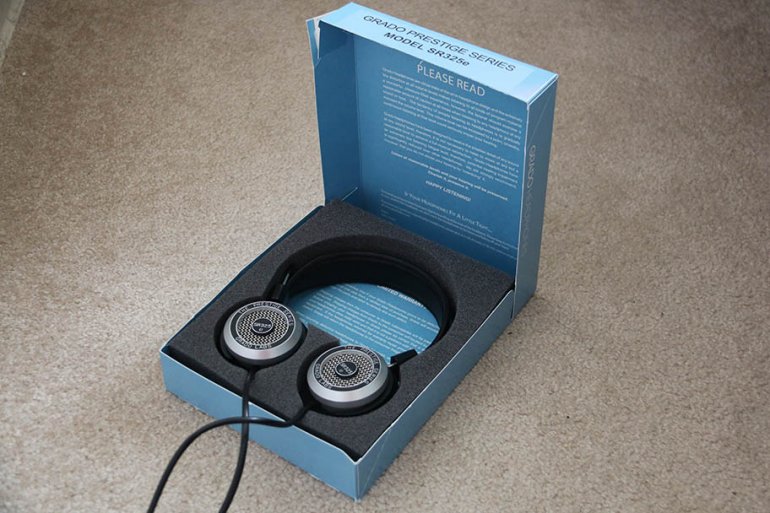
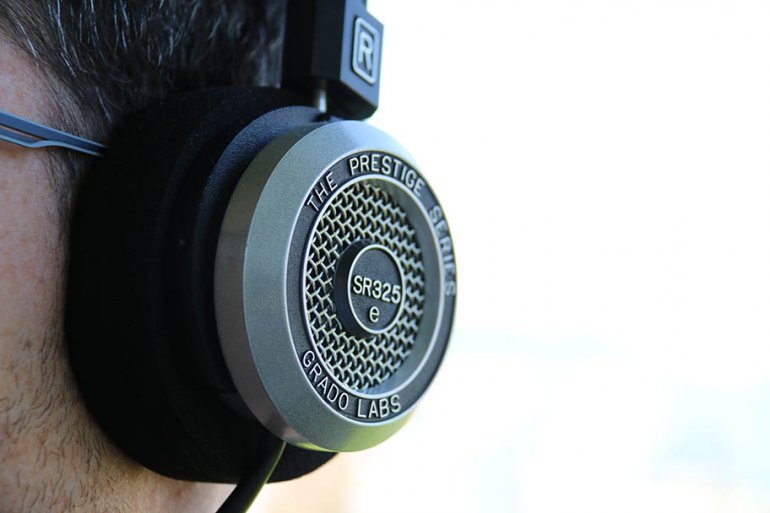
| Headphones | Price | Weight | Type | Drivers | Impedance | Sensitivity |
|---|---|---|---|---|---|---|
| Grado SR325e | $295 | 12.6oz | Over* | Unknown | 32Ω | 99.8dB |
| Grado SR80E | $99 | 8.2oz | Over* | Unknown | 32Ω | 99.8dB |
| Sennheiser HD600 | $299 | 9.2oz | Over* | Unknown | 300Ω | 102dB |
| Philips Fidelio X2 | $350 | 13.4oz | Over* | 50mm | 30Ω | 100dB |
| Shure SHR1540 | $374 | 10.1oz | Over* | Unknown | 46Ω | 99dB |
*Over = Over-Ear
Want Even More Master Switch? Sign Up For Our Weekly Newsletter!
One of the most common comparisons: the aforementioned Grado SR80E. The difference is mostly the price – these cost $99, compared to the SR325e’s $295. What accounts for the price is the diminished frequency range, which in turn, results in slightly less detailed polish. These are still excellent, and you will definitely get the Grado experience, but don’t expect the same audio quality.
At $4 more than the Grados, the $299 Sennheiser HD600 offer excellent value for money. While they may be old – they were released in 2009 – they are very much the objective standard for reference headphones, and still a firm favorite today. Expect slightly more give in the low end here, and you will get just as much bleed, as these are firmly open back. Choosing them over the Grados is personal, more than objective, and you could quite easily pick either one.
The Philips Fidelio X2 headphones have, quite rightly, become favorites among audiophiles. The open-back design and silky, shimmering sound signature. The 50mm drivers provide a fair amount of oomph to the proceedings, and they are immensely comfortable to wear. You’d go for these, if you wanted open-back sound at an affordable price ($50 more than the Grados, at $350), with a little more low end. They don’t have Grado’s detail or looks, but they are, nonetheless, a viable alternative. Be warned: they’re quite old now, and we’ve seen their availability fluctuate.
The Shure SHR1540s are where you’d go if you want to step to the next level. Shure’s cans may not get the love that Grado gets, but they’re excellent headphones.They’re not open-backs, but despite the lack of air, they have a similar sound signature to the SR325e headphones, with a smooth top end and some decent detail. They owe this to their heritage as an audio engineer’s headphone, and it really shows with the sound quality. The price? $374 to the Grado’s $295.